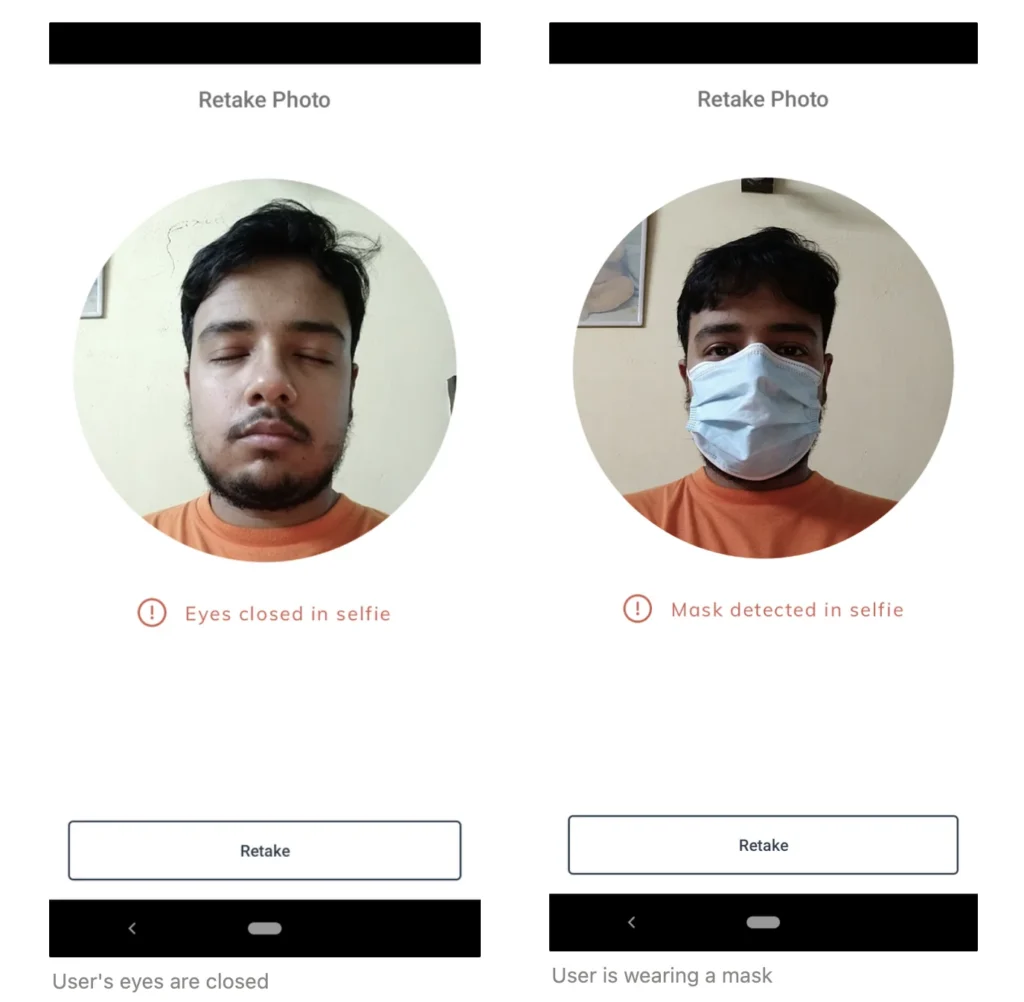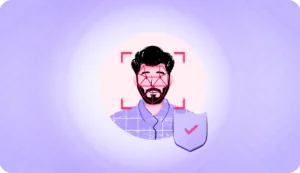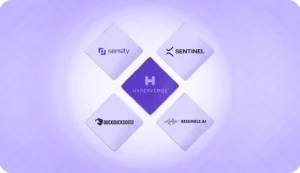As we navigate the complex modern era of technology, deepfakes have developed as a formidable obstacle, transforming the world of digital content authenticity. These advanced digital forgeries, driven by progressive artificial intelligence, have witnessed a dramatic upsurge, with reports indicating an 84% increase in deepfake making models from 2019 to 2020 according to CSO Online.
This surge emphasizes the pressing issues related to deepfakes, which can involve potential harm to reputation, financial deception, and weakening of public trust.
This post will get deep into deepfakes, spotlight their specific threats to the business world, and underline what actions companies need to take to lessen these risks. By looking at state-of-the-art tools for confirming identity and detecting deepfakes, we stress the importance of making sure digital content is genuine.
What is a deepfake?
When evaluating digital content, two important factors are perplexity and burstiness. Perplexity measures complexity, while burstiness assesses variation between sentences. This piece strives to achieve a low perplexity and high burstiness for a natural flow.
At its core, deepfakes leverage artificial intelligence and machine learning to create highly convincing, though false, videos, images, and audio recordings. This technology manipulates existing media to make it appear as if individuals are saying or doing things they never actually did. The term itself stems from combining “deep learning” (a subset of AI) and “fake,” highlighting the advanced computational techniques at its foundation.
Read more: What is a Deepfake: Comprehensive Guide To Deepfake Detection
There are many motivations behind synthesizing deepfakes. Sometimes, they function as instruments for amusement, parody, and academic goals, exhibiting the potential for AI in imaginative enterprises. The more obscure side uncovers malicious intentions, for example, political control, deceit, impersonation, and spreading mistaken data. This twofold quality underscores the need to comprehend the inspiration driving a deepfake’s generation.
How are deepfakes created?
Making deepfakes takes many steps using complex computer programs. These programs can change photos, videos, and sound in ways that were hard to imagine just a little while ago. Let’s take a deeper look at the advanced methods used to make these digital fakes seem very real.
The role of deep learning algorithms in deepfake creation
Machine learning models underlie deepfake technology. Algorithms of this nature, especially Generative Adversarial Networks (GANs), have been instrumental in pushing the boundaries of what’s possible with artificial neural networks.
A GAN comprises two components: the generator, which produces imagery or videos, and the discriminator, which appraises their genuineness. This arrangement establishes a feedback cycle, whereby the generator persistently refines its yields to make them more believable, grounded on the discriminator’s evaluations.
When developing these algorithms, researchers utilize immense datasets comprised of authentic images and videos. Within these datasets, the algorithms learn about typical human facial characteristics, expressions, and motions. The more data used to instruct the deepfake algorithms, the more proficient they become at replicating such attributes in a believable way.
This process underscores the importance of data in creating convincing deepfakes, highlighting the role of machine learning in understanding and replicating human nuances.
Techniques employed in deepfake creation:
Creating a deepfake involves several sophisticated techniques:
1.Source material acquisition: The first step is gathering an existing video footage or photo of the person you want to mimic. This material serves as the foundation for the deepfake.
2.Facial data extraction and alignment: Next, the source material is analyzed to extract detailed facial data. This includes facial expressions, lip movements, and eye movements. Advanced algorithms process this data, aligning it with the target video or image’s context. This step is crucial for ensuring that the deepfake seamlessly matches the target’s facial movements and expressions.
3.Image and video manipulation: The final step involves integrating the extracted facial data into the target video or image. This is where the magic of deep learning models shines. These models can blend the facial data so well that the final product looks natural. The manipulation is done with such precision that it accounts for lighting, shadows, and even the texture of the skin, making the deepfake incredibly convincing.
How do deepfakes affect your business?
Deepfakes pose a sophisticated threat to businesses, leveraging artificial intelligence to create convincing forgeries that can damage reputations, manipulate stock prices, and even commit fraud.
In a recent incident, a multinational company’s Hong Kong branch lost HK$200 million (equivalent to $25.6 million) due to scammers who used deepfake technology to impersonate the company’s CFO during a video conference call and ordered money transfers.
Deepfake technology can be weaponized in several ways against companies, each with potentially devastating effects:
- Impersonation of executives: Fake videos or audio track recordings of company executives can be created to issue false statements or unauthorized directives. This can lead to internal chaos, stock market manipulation, or damaging public statements that can hurt the company’s reputation.
- Financial fraud: By mimicking the voice or appearance of key personnel, attackers can authorize fraudulent transactions, redirect financial flows, or manipulate financial statements, leading to significant financial losses.
- Social engineering attacks: Deepfakes can be used to trick employees into divulging sensitive information, granting access to secure systems, or performing actions that compromise the company’s security.
Deepfake fraud costs more than just money lost. The fallout from a successful deepfake attack can be extensive:
- Damage to brand reputation
- The rapid transmission of incorrect information
- Potential damage to partnerships and trust
- Corporate ramifications, including fines and charges
Relevant read: Are Deepfakes Illegal?
How to protect your business from deepfakes?
Shielding your company from deepfakes necessitates facing a multifaceted test that demands a mixture of technology, cognizance, and strong security practices. The following are pivotal tactics to safeguard your business: developing acquaintance of deepfakes so you comprehend the risks they pose; utilizing media authentication tools to confirm if a video or audio is genuine or not.
Read more: How to detect AI-generated selfies
Implement robust identity verification systems
Authentication of one’s identity holds immense importance in safeguarding organizations from the hazards caused by elaborate forgeries. Implement a multilayered verification process, including biometric verification, document verification, and multi-factor authentication. This reduces the risk of unauthorized access and ensures the integrity of your communications.
Educate employees and partners
It is important to be aware of the threat of deepfakes and to train your staff and business partners to recognize the signs of such attempts. The training should include how to verify the authenticity of communications and what steps to take if they suspect a deepfake. Educating staff and raising their awareness is crucial in recognizing and responding appropriately when deepfake tricks are attempted.
Read more: How to spot a deepfake
Use advanced deepfake detection tools
Invest in advanced deepfake detection tools that can analyze deepfake videos and audio for signs of manipulation. These tools leverage artificial intelligence to detect deepfakes using:
– Facial recognition: analyze videos for signs of facial manipulation.
– Liveness check: confirm if the individual completing the verification process is present in real-time and is a real person.
💡 Pro tip: At HyperVerge, we highly recommend implementing single-image passive liveness checks, which include uploading a single image and nothing more! This makes the verification process super simple and effortless for the user, reducing the risk of drop-offs.

Develop a comprehensive incident response plan
It’s important to have a plan in place in case your business is targeted by a deepfake attack. This includes steps for quick identification, containment, and communication to stakeholders. When a deepfake incident happens, it’s important to have clear protocols for sharing accurate information to avoid confusion and false information.
It’s also important to stay informed about new deepfake threats by collaborating with industry associations and cybersecurity experts. This network can provide valuable insights and early warnings about new threats.
Conclusion
The advent of deepfakes presents a significant challenge to the authenticity of digital content, making the detection and verification of such content paramount for businesses. Implementing advanced identity verification and deepfake detection tools is essential in maintaining the integrity and trustworthiness of digital interactions.
HyperVerge’s deepfake detection and identity verification suite offer powerful solutions for businesses looking to protect themselves in the digital age. Want to see how it fits your unique needs? We’re just a call away!
FAQs
1. How do deepfake videos work?
Deepfake videos are created using video manipulation tools and a video rewrite program that leverages artificial neural networks, specifically generative adversarial networks (GANs). These networks are trained on large sets of data, including genuine videos and images, to learn facial features, expressions, and speech patterns, enabling the generation of synthetic media with high realism.
2. How deepfake methods be used for identity theft or spreading misinformation?
Yes, deepfake technology poses a risk of identity theft and spreading false information. By employing deep learning technology, malicious actors can create convincing videos featuring world leaders, historical figures, or even ordinary individuals to deceive and manipulate viewers. This technology advances the potential for identity fraud, phishing attempts, and the spread of fake news on social media platforms.
3. How can one spot and detect deepfakes in videos?
Detecting deepfakes requires advanced techniques from the field of computer vision and media forensics. Researchers use AI tools to recognize patterns and visual artifacts that may indicate manipulation. Techniques such as analyzing inconsistencies in facial expressions, unnatural movements, or discrepancies in audio can be employed to spot deepfakes. Ongoing efforts in developing and refining detection methods are crucial to combat the potential misuse of synthetic media in spreading false information.






